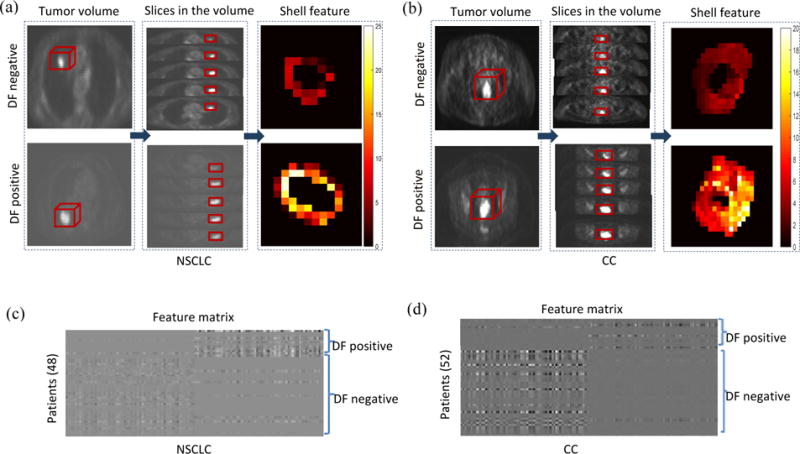Figure 3.

The shell feature has the discriminative ability to detect distant failure (DF)-negative and -positive tumors. (a) (b) are representative examples of 2D shell in terms of structure heterogeneity. (a) NSCLC cases. (b) CC cases. In each cohort, the shell feature (third column) is computed from a series of slices (second column) in the tumor volume (first column), with the top row showing tumors without distant failure and the bottom row showing tumors with distant failure. As shown, tumors with distant failure present more complicated morphologic patterns. (c) (d) are feature matrices of the whole patients, where each row refers to sparse coefficient of the vectorized shell from one patient, and each column corresponds to an element of the feature. (c) NSCLC cases. (d) CC cases. These features are sparse coefficients learned from the original vectorized shells by dictionary learning method. These feature matrices exhibit clustering characteristics for (DF)-positive and -negative tumors.
